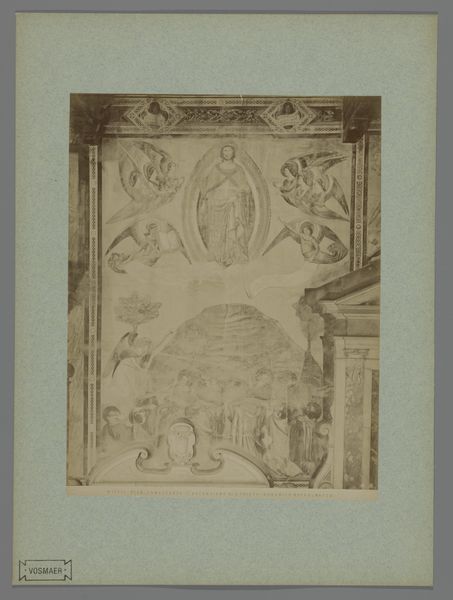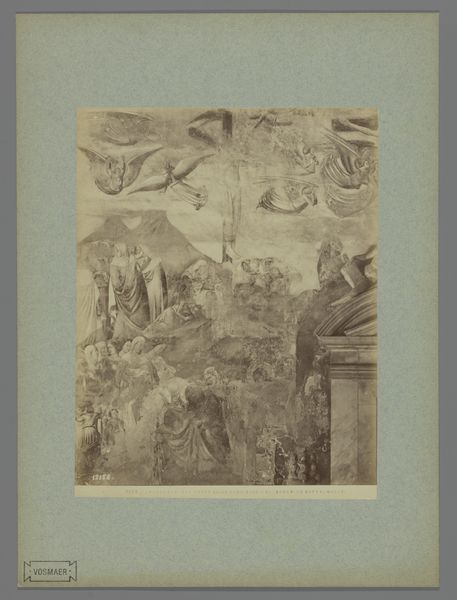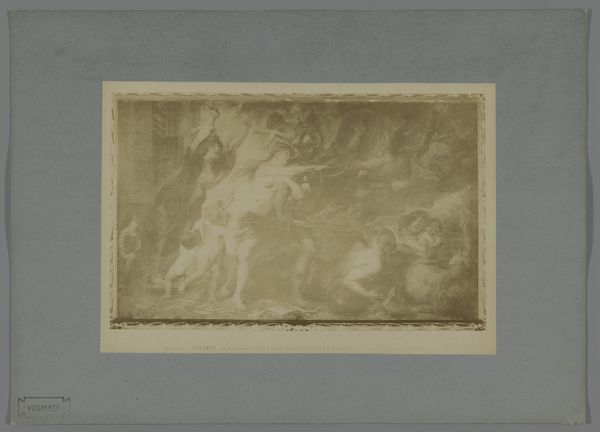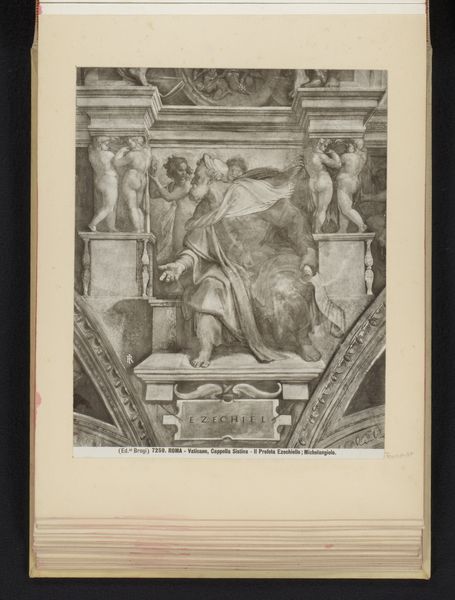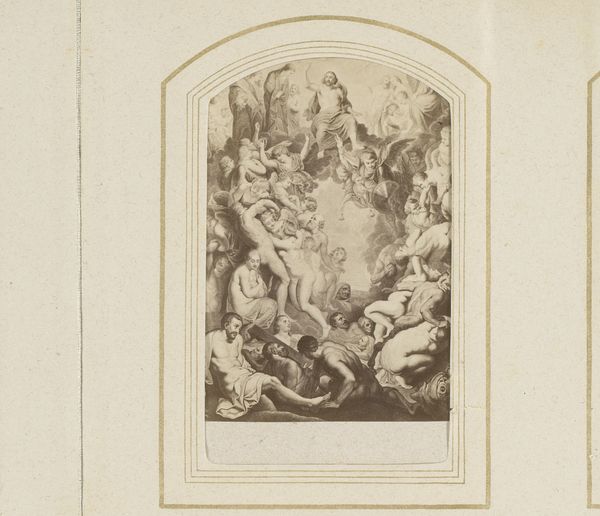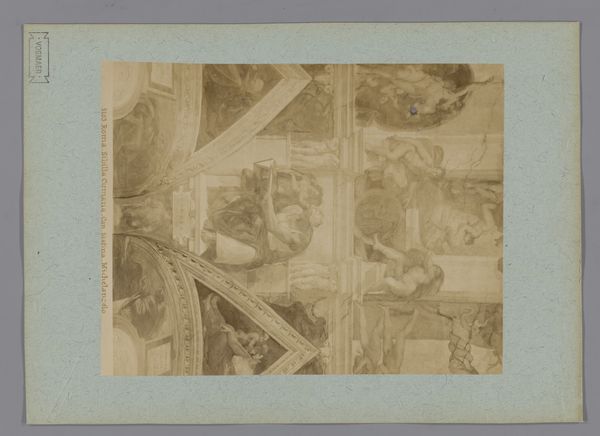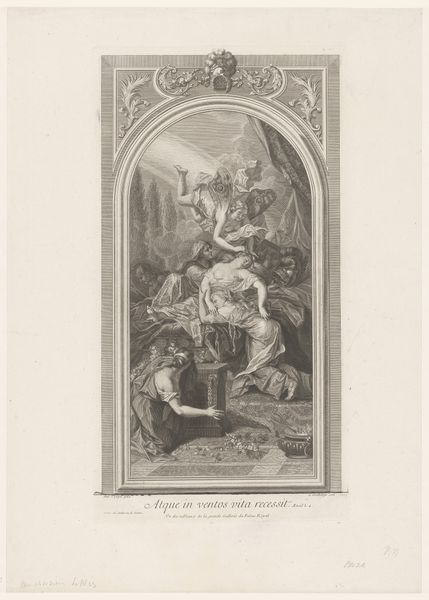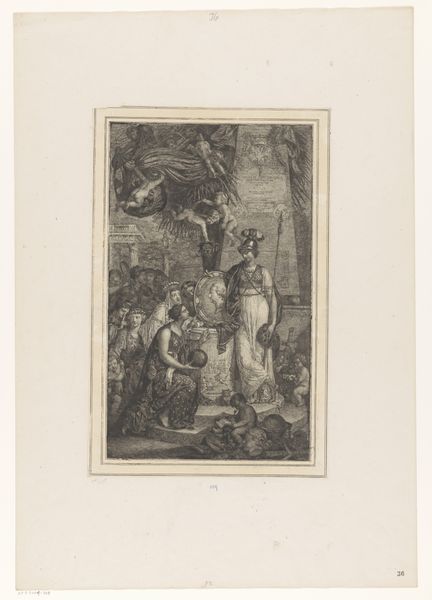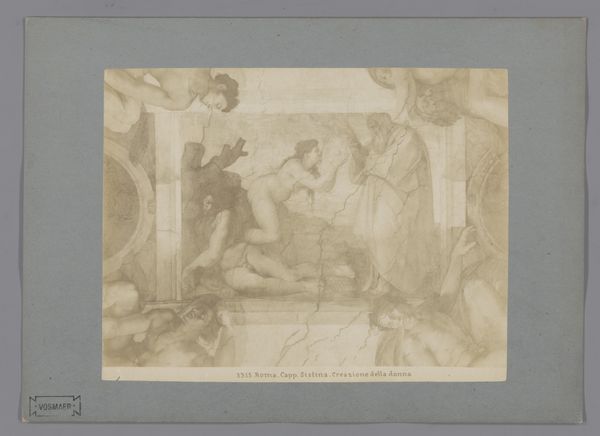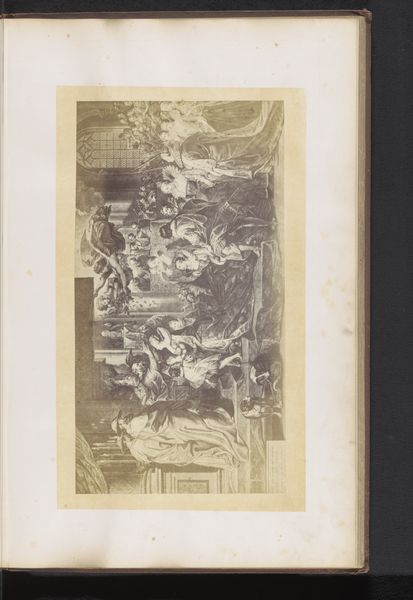
Fotoreproductie van een deel van het fresco Kruisiging door Buffalmacco in het Camposanto te Pisa, Italië 1852 - 1900
0:00
0:00
fresco, photography
#
photo of handprinted image
#
aged paper
#
homemade paper
#
medieval
#
reduced colour palette
#
muted colour palette
#
photo restoration
#
light coloured
#
white palette
#
fresco
#
photography
#
history-painting
#
soft colour palette
Dimensions: height 247 mm, width 193 mm, height 553 mm, width 261 mm
Copyright: Rijks Museum: Open Domain
Editor: This is a photo from between 1852 and 1900 of a section of the fresco “Crucifixion” by Buffalmacco, located in Pisa. The scene is crowded and chaotic, with the soft, aged tones creating a dreamlike, almost unsettling feeling. I am drawn in, but it feels like viewing a half-remembered legend. What story does this fragment whisper to you? Curator: Ah, yes, it’s as if we’re peering through time itself, isn’t it? To me, this photograph feels like a relic, layered with stories of faith, artistry, and the very passage of time. Consider that original fresco - a huge undertaking. The sheer scale of the ‘Crucifixion’ would have overwhelmed the senses. The way the figures are arranged almost tumbles across the surface – not serene at all. It captures a sense of tumult. But, I wonder, does it remind you of any particular… sensation? Editor: Perhaps a feeling of history bearing down, or being overwhelmed by something monumental. The limited palette makes me wonder, was that a choice of the photographer, or representative of the original fresco? Curator: A wonderful question! I suspect the muted tones come, in part, from the photographic process of the time. It's a reminder that this isn't a direct experience, but a translation – a layer of interpretation. The Alinari brothers, who most likely took this picture, were famous for documenting Italian art, helping spread knowledge across Europe and beyond. It’s a cultural artifact documenting a cultural artifact. In a sense, it brings the Camposanto to us! What’s your takeaway? Editor: I never thought of it that way, as a record documenting a record! It gives new weight to photography, going beyond capturing a subject to also capturing history itself. Thanks! Curator: Indeed. There's always more than meets the eye when you allow yourself to truly look!
Comments
No comments
Be the first to comment and join the conversation on the ultimate creative platform.
